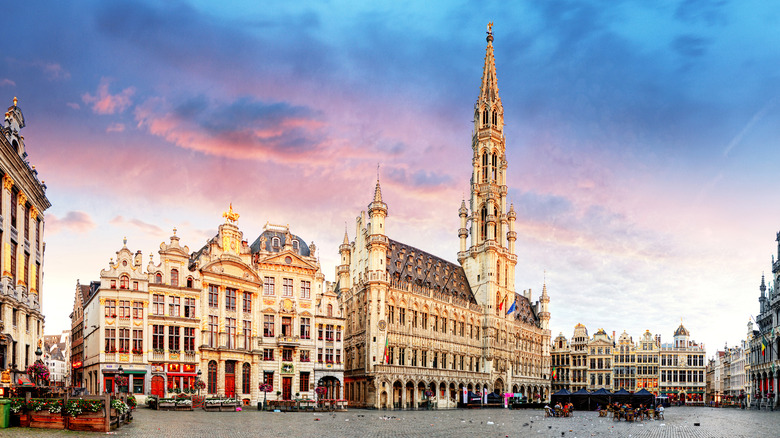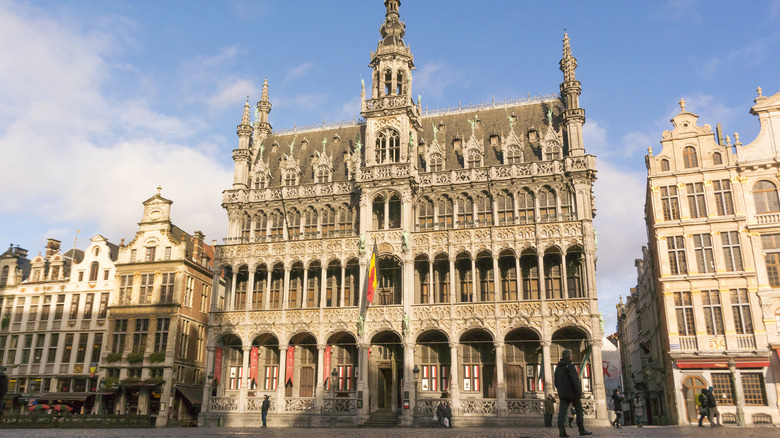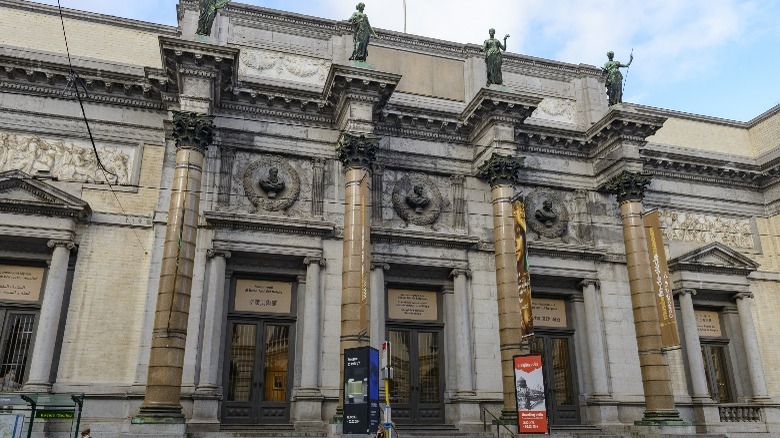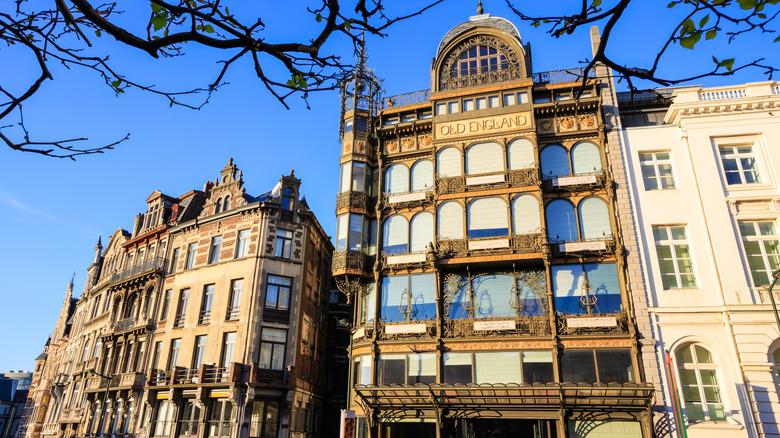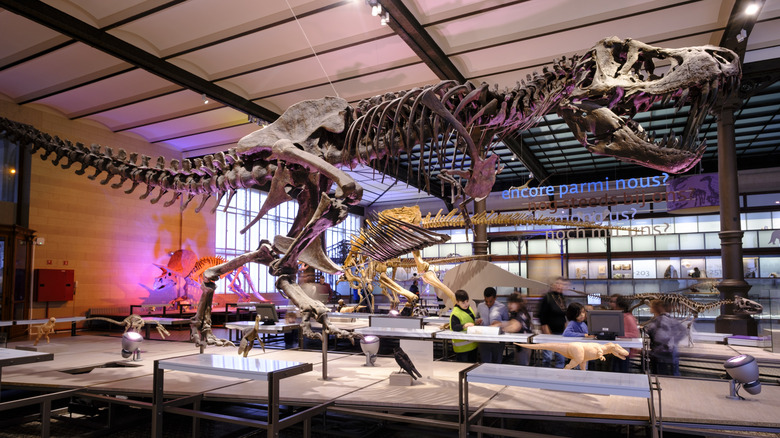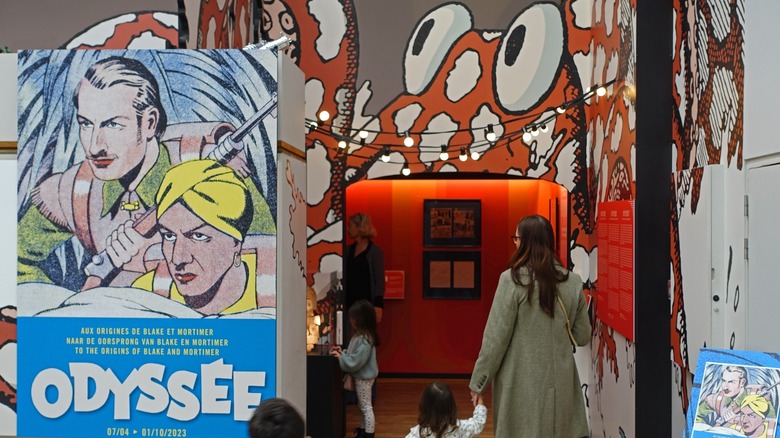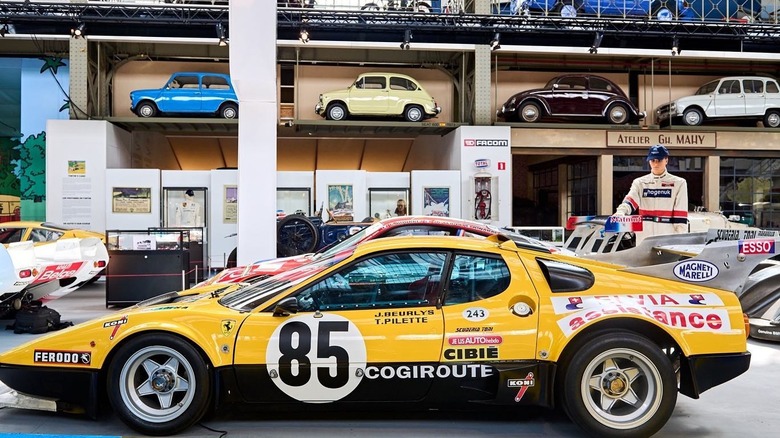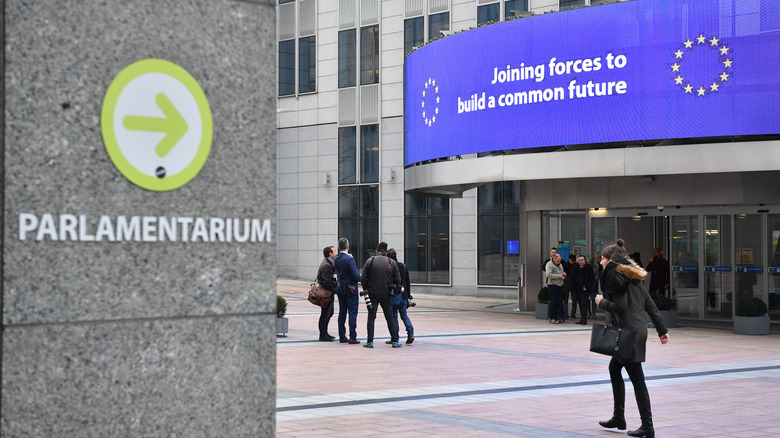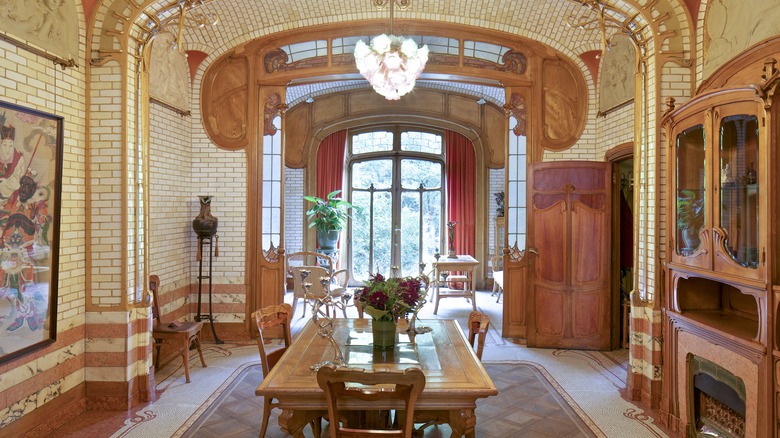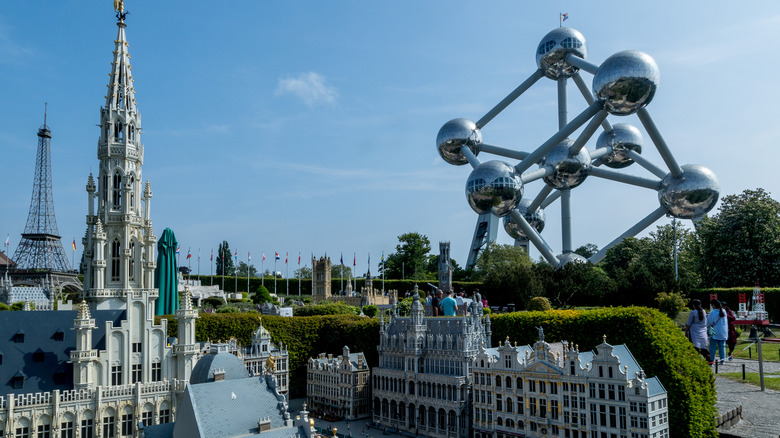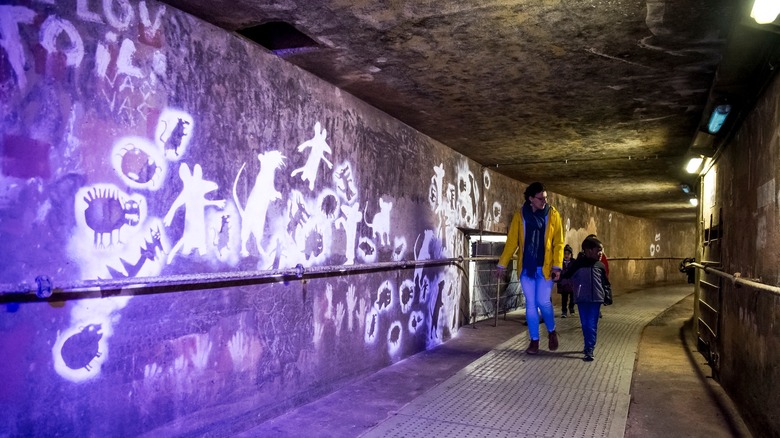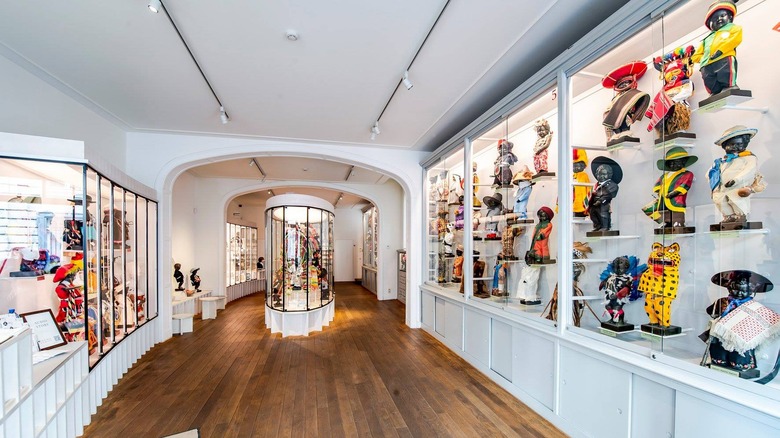The Best Museums In Brussels
As the home of the European Parliament and NATO, Brussels is often recognized as being a political hub and the capital of Europe. However, it also boasts a rich history, a unique culinary scene, and varied attractions that make it a great vacation spot. Between its famous chocolate, mouth-watering waffles, tasty French fries, and refreshing beer, Brussels is inarguably a must-visit destination for foodies. What's more, it also has plenty to offer in terms of art, spectacular festivals, unrivaled Art Nouveau architecture, and historical attractions.
Brussels has something for visitors of all tastes and ages and is perfect for a short layover or weekend getaway while also boasting enough points of interest for a longer stay. Another bonus is that its historic core can be visited on foot while attractions located slightly outside the main center are easily accessible by subway, tram, and bus. There are also numerous fabulous day trips that you can do on your own by train – think Bruges and Ghent.
Whether Brussels is already on your list or you're just starting to consider it, these top-rated museums are sure to sway you in favor of a visit.
Brussels City Museum
Most visitors to Brussels will kick off their sightseeing at La Grand-Place. A UNESCO World Heritage Site, the square is surrounded by historic buildings on all four sides, including the 15th-century city hall, various 17th-century guild houses, and the famed King's House. The latter houses the Brussels City Museum and is a great starting point for first-time visitors, as it provides a solid look at the city's history.
The building, which used to be the site of a bread market back in the 13th century, was rebuilt as a home for the Duke of Brabant in 1405, then overhauled by Charles V, Duke of Brabant and King of Spain, in the 16th century. It's been known as King's House ever since, although it's actually been a municipal museum since 1887. Inside, you'll learn the story of the city through a permanent collection of paintings, tapestries, religious artifacts, and more. The large-scale models depicting 13th-century Brussels are particularly impressive, as is the fact that the building provides a portal back in time with its lavish staircases, stained glass windows, and grand rooms. This is also where you can get up close and personal with the original Manneken-Pis. That's right: The famous peeing boy presiding over the fountain just a few minutes from the museum is a replica. Believe it or not, the statue was stolen so many times, it was moved here for safekeeping in 1966 and replaced with a lookalike!
Royal Museums of Fine Arts of Belgium (including the Magritte Museum)
The Royal Museums of Fine Arts of Belgium make up the grandest and most visited group of museums in the city. The cluster, located right next to the Royal Palace of Brussels, is home to the Fin-de-Siècle Museum, the Magritte Museum, and the Old Masters Museum, all of which can be visited with a single ticket. Interestingly, Belgian architect Alphonse Balat, who worked on the palace, was the one who designed the impressive museum building at the end of the 19th century.
In addition to temporary exhibits, the expansive permanent collection runs from the 15th century up to the 21st with a focus on paintings, sculptures, drawings, and prints. Begin your visit at the Old Masters Museum, which hones in on the 15th to 18th centuries, and you'll be wowed by a large collection of key works from Dutch and Flemish greats. Just some of the noteworthy names include Hans Memling, Hieronymus Bosch, Pieter Bruegel the Elder, Peter Paul Rubens, and Anthony van Dyck. You can then move ahead in time at the Fin-de-Siècle Museum which is dedicated to the 1900s. A haven for Art Nouveau lovers, it brings together paintings, prints, sculptures, and more from the Gilded Age. Finally, there's the Magritte Museum (which can be visited on its own), housing the world's largest collection of works by the Belgian surrealist. Here, you can learn all about Magritte's life and career through 230 works, ranging from his art to personal photographs.
Musical Instruments Museum (MIM)
Right across the street from the Royal Museums of Fine Arts of Belgium is a glorious Art Nouveau building that stops visitors in their tracks. This architectural masterpiece, which is perfectly preserved, used to house the luxe Old England department store. Indeed, you can still see the shop's name emblazoned on the iron and glass facade, which appears to be frozen in time.
Inside, you'll find the equally impressive Musical Instruments Museum (MIM). Spanning four floors, the museum is home to about 1,200 instruments and is a great attraction for visitors of all ages. As you make your way through the various levels, you'll learn about the history of musical instruments in Europe, see some of the finest masterpieces from around the world, and discover traditional instruments you've likely never seen before. Just some of the more unusual finds include a knaptand (a clapper wearing a wolf costume!) and a bianqing (an instrument with 16 hanging stones that have different thicknesses and are played with a hammer). Best of all, though, is the multimedia guide, which is included in the entrance fee. Put on your headphones and you'll be able to listen to 300 musical excerpts played by the various instruments you see before you.
Royal Belgian Institute of Natural Sciences
If you're searching for a museum that's fun, educational, and perfect to visit with kids as young as three, then the Royal Belgian Institute of Natural Sciences should top your list. All in all, the museum owns a whopping 38 million specimens, making it the third largest natural history collection in Europe. While not everything is on display, there is more than enough to see and you should allot two to three hours for a comprehensive tour. The collection is split into six portions – entomology, invertebrates, vertebrates, anthropology and prehistory, paleontology, and geology – and just some of the stellar permanent exhibits include the Gallery of Evolution and Mineral Hall. Living Planet is especially great for younger visitors, as it offers them the chance to learn about Earth's living organisms through hands-on displays, specimens, videos, and more.
However, there's no arguing that the Dinosaur Gallery is the museum's star attraction. It's the largest room in all of Europe to be entirely devoted to dinosaurs and it gives visitors a comprehensive look at their life (and eventual demise) through fossils, replicas, and interactive exhibits. Just some of the highlights include hearing a Parasaurolophus's scream, learning how fossils are formed, and marveling at 30 almost fully intact iguanodon skeletons.
Belgian Comic Strip Center
Belgium is known for its chocolate, beer – and comics. Known as bandes dessinées (or BDs) in French, comics are often referred to as "the ninth art" in Belgium and shot to fame after Hergé debuted "The Adventures of Tintin" in 1929. From there, the artform took off and today, Belgium has the highest concentration of comic strip artists in the world, clocking in at 700 authors and counting. Just a few of the country's most beloved characters include Gaston, Asterix, the Smurfs, and Nero and you'll get to meet them all at the Belgian Comic Strip Center.
Opened in 1989, the museum is housed inside one of the city's most majestic Art Nouveau buildings designed by legendary architect Victor Horta in 1906. As you make your way through the exhibits, you'll have the chance to see original drawings, unpublished documents, and various characters brought to life in the main hall. You'll learn how the comic strip was invented and see what goes into crafting one, all while discovering different artists, styles, and periods. Kids will especially love getting to play in a Smurf house, which is part of the museum's latest addition: a space dedicated entirely to Peyo, inventor of the Smurfs.
Tip: Once you're done inside, take a stroll along the Comic Book Route to see various comic-inspired murals across the city. Launched by the Belgian Comic Strip Center, it's now made up of over 60 selfie-ready murals.
Autoworld
Car lovers will feel their jaws drop as they enter Autoworld inside Parc du Cinquantenaire. The huge steel and glass hall was built as part of the World Expo of 1888 and in 1902, it became home to an annual bike and car show. Nowadays, it honors that heritage in its new incarnation as a museum. Its impressive collection includes 300 vehicles, ranging from cars to ancient coaches and motorcycles, many of them procured and lovingly restored by collector Ghislain Mahy and his family. To make the visit more interesting, the collection is split up into various themed zones, which include vehicles from the USA, rides made in Belgium, and a Sport & Competition zone where you'll see automobiles built for racing paired with old photographs and movies.
However, the most interesting part of the museum may just be the Salon 1910 where you can see about 30 of the cars that would have been sold here from 1902 through 1934 when the building hosted the annual car and bike fair. Back then, cars were made to measure and it's fascinating to see how much the industry has changed. Other highlights include an area dedicated to Tintin's cars (which opened in 2022), the chance to be photographed in a F1 Vaillant racing car, as well as rotating temporary exhibits, like 2023's "Chevrolet Corvette a legend turns 70" and "Porsche 75 years, driven by dreams."
Parlamentarium
A government-themed museum may not sound particularly fun to everyone, but this is certainly an exception. Brussels is the headquarters of the European Union and thus, is home to the European Parliament. And right next to it, you'll find the Parlamentarium, Europe's largest parliamentary visitors center. Here, you can learn how the European Union was formed, discover how the parliament actually works (including how laws are passed), and get to know more about its current 27 member countries.
Admission is always free, as is the audio guide that will take you on a self-guided tour of the space in about 90 minutes. One of the unique standouts includes a giant interactive floor map of Europe that lets you explore and learn all about the different members. There's also a theater that offers a 360° view of the hemicycle (the parliamentary chamber next door), as well as a 360° virtual trip through the European Union's various countries.
Tip: You can pay a visit to the real hemicycle, which is also totally free and located right next to the Parlamentarium inside the main parliament building. Once again, you'll be offered an audio guide and you can see where parliament really meets and works, plus visit the permanent 'United in Diversity' art exhibition showcasing works from every member state.
Horta Museum
If you haven't heard of architect Victor Horta, he is to Belgium what Frank Lloyd Wright is to the U.S. Working at the end of the 19th century and into the mid-20th century, Horta was an Art Nouveau pioneer and four of his townhomes still stand today and are all recognized by UNESCO. The most magnificent (and largest) is the Horta Museum, which was designed by the architect for his own use as his private home and studio. Built between 1898 and 1901, it comprises two buildings that scream Art Nouveau and are filled with original details, ranging from furniture designed by Horta to stained glass paneling and personal effects. As you wander through the various floors (where, sadly, no photography is allowed), you'll learn about the star architect and see everything from his work area to his bedroom, kitchen, salon – you name it – and get a real feel for what life was like for wealthy individuals at the turn of the century. Whether you're an architecture buff, an Art Nouveau lover, or simply love visiting beautiful space, the Horta Museum delivers.
Tip: You can easily visit another Horta townhouse, Hôtel Solvay, nearby on the same day. Tycoon Armand Solvay commissioned the home in 1894 and gave Horta carte blanche and an endless budget to design it, so you can just imagine the splendor that awaits you.
Atomium, Design Museum, and Mini-Europe
Brussels' Atomium is easily one of its most recognizable landmarks. Designed for the 1958 Brussels World's Fair (or Expo 58), it was actually supposed to be torn down but it's now one of the city's most popular tourist attractions. Just under 335 feet tall, the giant metal structure was built in the shape of an elementary iron crystal magnified 165 billion times. Inside, you can enter a number of its spheres, including a lateral one where you can photograph the city with elements of the Atomium and the upper sphere offering 360° view of the city and housing the Atomium restaurant. There's also a lower sphere which is home to a permanent exhibit telling the story of the pavilion with all its ups and downs, like how it fell into disrepair in the '90s. As you make your way between the cupolas, you'll also be amazed by the interior architecture which looks like a spaceship.
What's more, your Atomium ticket automatically includes admission to Design Museum Brussels. Here, you can experience two core exhibitions: Belgisch Design Belge dedicated to Belgian design and Plastic Design Collection dedicated to objects made in plastic from the 1950s to today. You can also make a full day of it by buying a combo ticket that includes Mini-Europe. This quirky open-air museum is located at the foot of the Atomium and lets you visit the whole of Europe at once as you walk among all of its most famous attractions in miniature form.
Sewer Museum
Yes, you read that right: Sewer Museum. Don't let the name or its concept deter you, though, because this is one of Brussels' most unique and memorable visits. Make your way about 30 feet underground and you'll have the opportunity to stroll along the hidden Senne river before entering into the collector sewer of the Chaussée de Mons. Yes, it's a real working sewer and you can walk its banks for over 160 feet, which we bet is not something you ever thought you'd do! However, do note that the space is occasionally closed to tourists due to flooding. Upstairs, there's also a more traditional museum component that teaches visitors of all ages about the importance of sewers and their function, showcases how they're built, and explains how water management works. All while shining a light on a job many people don't even know exists: sewer worker.
The Sewer Museum also offers some great activities crafted specifically for its youngest guests. Children can pick up a free explorer's notebook and play games and solve puzzles throughout your visit. Kids under 18 can also get a free audio guide that will have them stepping into the shoes of a newly hired worker and solving challenges and riddles. For any adults wanting to get in on the fun, they can also take part in the latter for just 2€ (about $2).
Brussels' museums of beer, chocolate, and Manneken-Pis
They may not be the biggest or most visited museums in the city, but these quirky institutions are worth your time if you want to experience something unexpected and unique during your time here. First up is the GardeRobe Manneken-Pis which houses the entire wardrobe (140 outfits and counting!) of Brussels' smallest but most famous resident. Then there's Choco-Story Brussels where you can satisfy your sweet tooth while learning all about chocolate's history and how it's made. You'll also have the chance to see a real-life master chocolatier at work, as they make pralines right in front of your eyes. And yes, you'll have the opportunity to taste some delicious chocolate during your visit.
Last but not least, you can finish off your day of fun sightseeing by popping into the Cantillon Brewery and Brussels Museum of the Gueuze. Here, you'll get to see inside a family-owned brewery and learn about one of Belgium's other famous exports: beer. Specifically, lambic which the family has been brewing since 1900. Learn all about their process, then try some for yourself.
